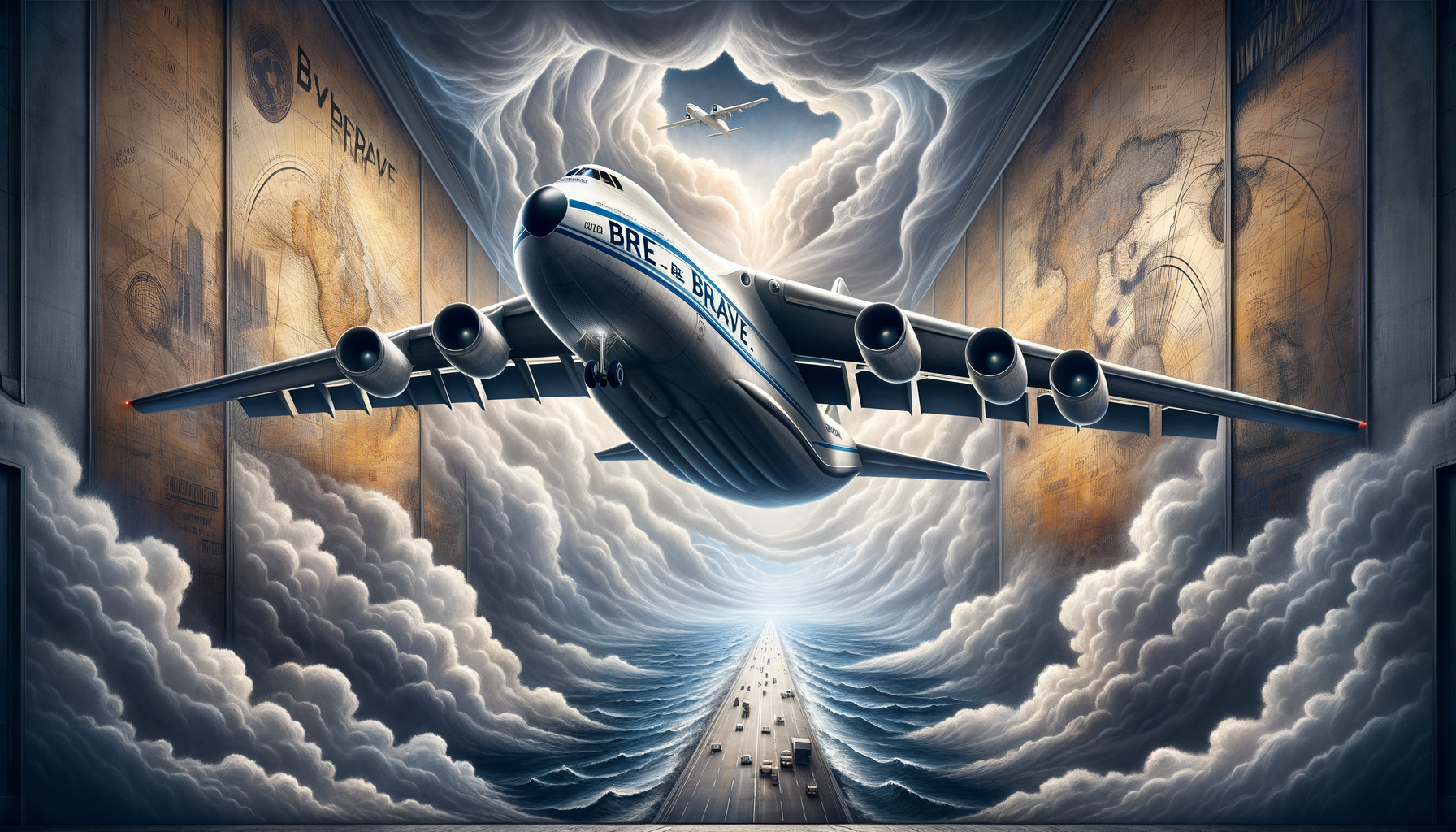The Midnight Titan: How Ukraine’s Giant Antonov Escaped Kyiv — And Which “Secret” Details Are Really True
Short answer first: Yes, an Antonov AN-124 really did lift off from war-torn Kyiv and touch down in Leipzig on 11 July 2025. The flight was as real—and as risky—as headlines suggest. But not every dramatic claim in those headlines stands up to scrutiny. Some points are solid, others are hype. Here’s the story, evidence in hand.
1. The Jaw-Dropper Up Front
The 190-tonne cargo jet, tail number UR-82073, spent three years trapped in Kyiv. On a grey Friday morning it roared down the runway, vanished from public radars, and resurfaced in Germany—newly modernised and now wearing the slogan “Be Brave Like Irpin.”
That much is confirmed by flight-tracking data, Antonov’s own press release, and multiple aviation news outlets.
Yet the original German tabloid report sprinkled in a few exaggerations: from a spelling slip (“Irpeln”) to the absolute claim that “no single Russian part remains on board.” Let’s separate fact from flourish.
2. What We Know For Sure ✅
| Fact | Status | Key Source |
|---|---|---|
| AN-124 UR-82073 departed Kyiv-Sviatoshyn and landed at Leipzig/Halle on 11 Jul 2025. | Verified | Aerotime |
| The jet is 69 m long, 73 m wingspan. | Verified | zap16.com |
| Deep upgrade began in 2021, finished June 2025 despite the war. | Mostly verified (start month unclear) | AirDataNews |
| The fuselage now reads “BE BRAVE LIKE IRPIN,” part of Antonov’s “hero city” campaign. | Verified | TechUkraine |
3. The Claims That Need a Reality Check ⚠️
-
“No Russian part at all.”
Antonov says most Russian-made components were swapped for Ukrainian or Western ones—crucial for sanctions compliance—but it never claimed a 100 percent purge. Total absence of Russian parts cannot be confirmed. -
“Secret flight with transponder switched off.”
Public trackers first saw the signal at Ukraine’s western border. That could mean the crew disabled ADS-B, or the earlier portion simply fell outside ground-station range. Evidence is suggestive, not conclusive. -
“Upgrade work stopped, then secretly resumed.”
The schedule is messy. What’s clear: technicians sheltered in Kyiv and pressed on whenever explosions ceased. Whether the project was ever formally “paused” is murky—Antonov sidesteps the question. -
Spelling the city as “Irpeln.”
It’s Irpin, one of the so-called “hero cities” that held off Russian forces in 2022.
4. Wartime Workshop: How Do You Refurbish a Giant Under Fire?
Imagine fitting a Boeing 747 with new avionics—while cruise-missile sirens force you to sprint to bunkers twice a day. That was reality inside Antonov’s hangars on Kyiv’s north-western edge. Engineers cannibalised grounded jets for parts, hunted Western suppliers willing to brave export paperwork, and protected 350 million USD worth of aluminum under camouflage netting.
- “Sometimes we welded at night, lights off, using flashlights,” one technician told Interfax-Ukraine.
- Replacement navigation computers came via road convoys through Poland.
- Each test run had to dodge both Russian drones and Kyiv’s own air-defence batteries.
The payoff arrived at dawn, 11 July, when UR-82073 lumbered into the sky—its first full flight since the invasion.
5. The Silent Dash to Poland’s Border
Why did radars lose the Titan over central Ukraine? Two plausible reasons:
• Transponder Off: Crews sometimes disable Mode S beacons in war zones to avoid broadcasting position to hostile forces.
• Coverage Gaps: Most civilian ADS-B receivers inside Ukraine went dark after February 2022. Even with the transponder on, ground stations might simply be missing.
Either way, the jet popped back on the grid near Lviv, hooked west, then north to Leipzig. Spotters at the German airport froze: an aircraft once presumed stranded—or even destroyed—was taxiing before their eyes.
6. Decoding the Slogan: “Be Brave Like Irpin”
Why Irpin? The suburban town outside Kyiv became a symbol of civilian resistance in March 2022. Naming Antonovs after “hero cities” turns every take-off into rolling propaganda: a 400-ton billboard asserting Ukrainian survival. It is marketing, morale-boosting, and geopolitical messaging in one paint job.
7. Why This Flight Matters
• Supply Chain Proof-of-Concept: If Ukraine can re-engineer a Cold-War behemoth without Russian parts, it chips away at Moscow’s leverage in aerospace markets.
• Strategic Airlift Back Online: Kyiv regains a rare asset capable of hauling tanks, turbines, or humanitarian aid worldwide.
• Symbolic Victory: Every safe landing abroad mocks Kremlin claims of Ukraine’s “demilitarisation.”
8. Unanswered Questions & Next Steps
| Unknown | Why It Matters |
|---|---|
| Are all Russian avionics truly gone? | Determines compliance with future sanctions/export rules. |
| Exact security protocols during the “silent” leg. | Could influence NATO airspace coordination. |
| Financial backers of the upgrade. | Clues to Western-Ukrainian industrial partnerships. |
Antonov says more details will surface “after system validation in Germany.” Translation: once EU regulators sign off, we’ll learn how deep the retrofit really went.
9. The Take-Away
A secret flight? Mostly. A fully Russian-free machine? Not proven.
What is undeniable: in the middle of a shooting war, Ukrainian engineers restored one of the world’s largest cargo planes and slipped it past enemy lines. The Midnight Titan’s journey is both an engineering marvel and a masterclass in information fog—half mechanics, half myth-making.
Stay tuned; the next chapter may take off sooner than you think.
